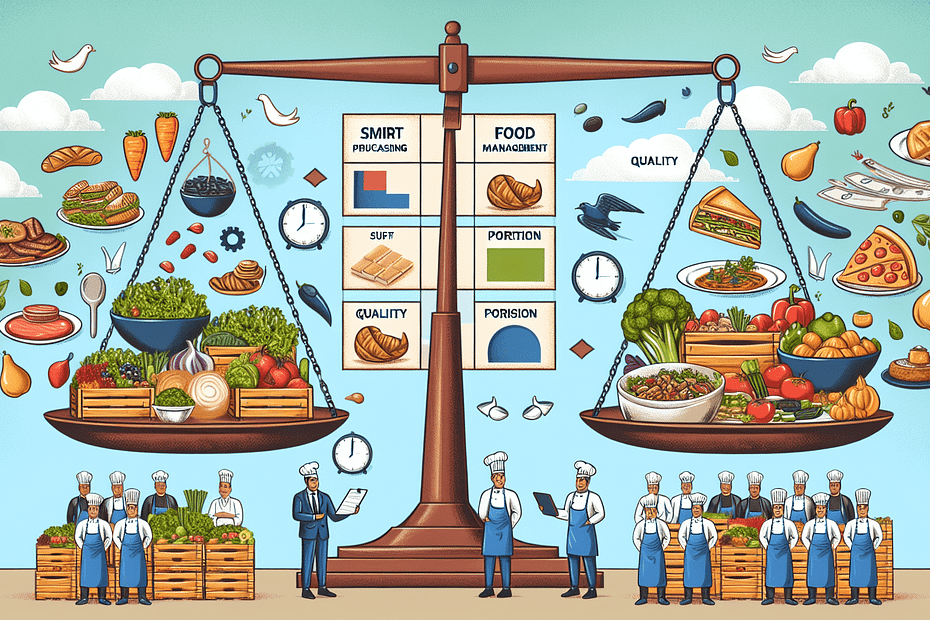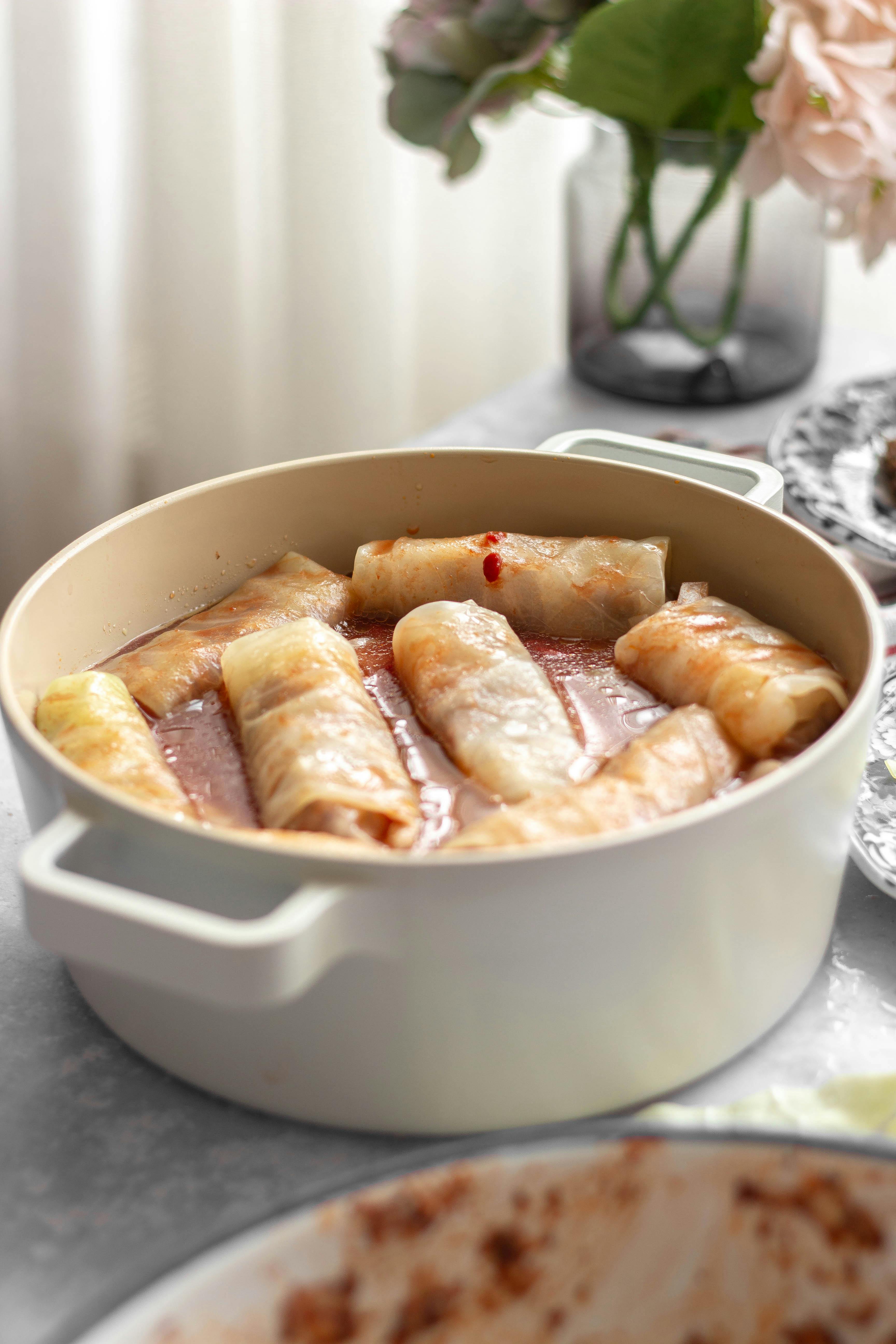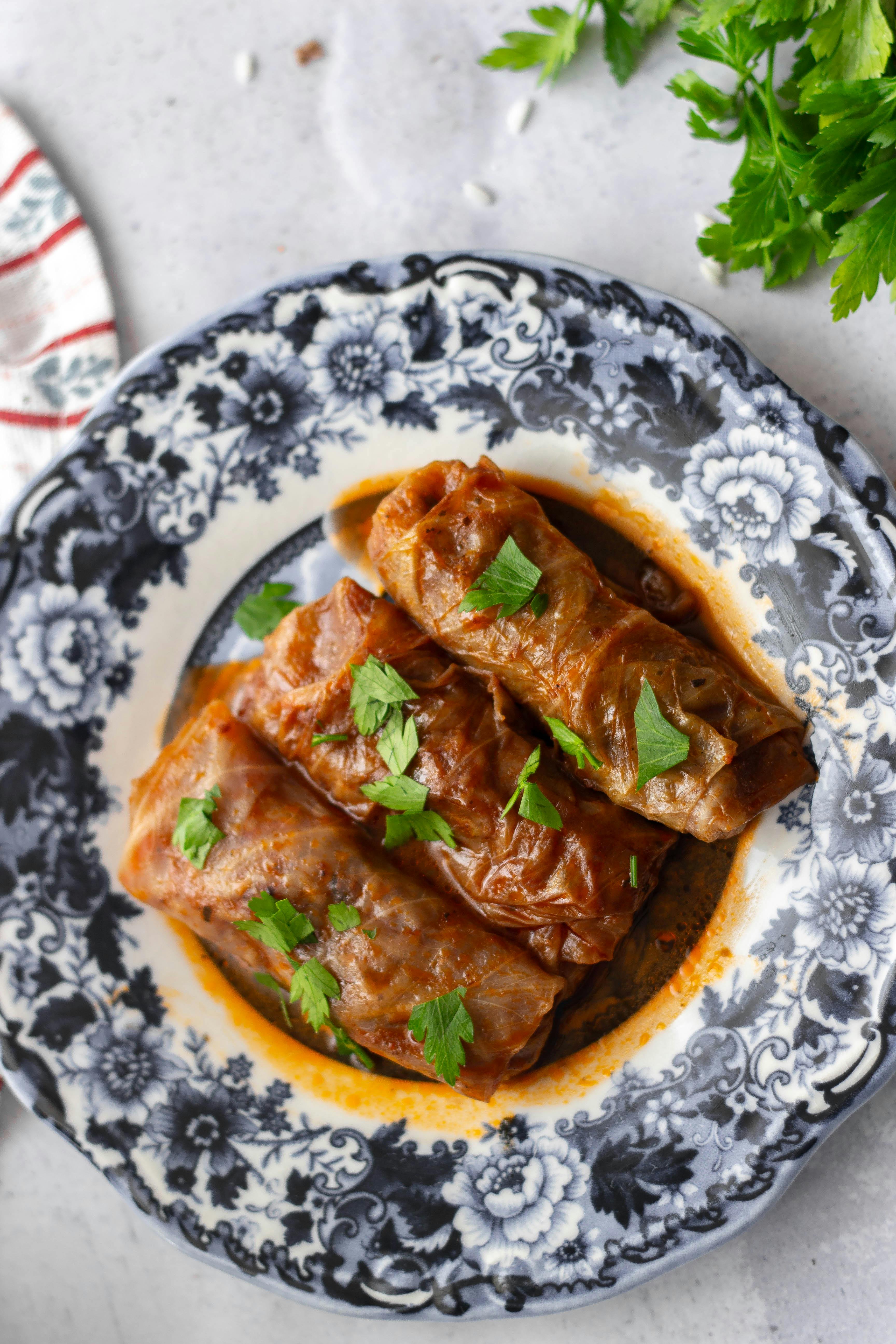In the fast-paced world of the restaurant industry, finding the delicate balance between managing food costs and maintaining quality can be a daunting task. But fear not, as this article is here to guide you on this culinary journey. We will explore practical strategies and expert tips that will help you navigate through the challenges of food costing, ensuring that your restaurant not only remains profitable but also delivers top-notch dishes that keep customers coming back for more. So, let’s dive into the realm of culinary management and uncover the secrets to success!
Menu Planning
Analyzing food costs
When it comes to menu planning, analyzing food costs is essential. You need to understand how much each ingredient costs and how it contributes to the overall profitability of your dishes. By reviewing supplier invoices and keeping track of ingredient prices, you can identify any fluctuations in costs and make informed decisions about menu pricing.
Determining profitable dishes
Once you have a clear understanding of your food costs, you can determine which dishes are the most profitable for your restaurant. Take a look at the popularity of each dish, the cost of ingredients, and the selling price to calculate the profit margin. Identify the dishes that bring in the most revenue and prioritize them on your menu.
Considering seasonal ingredients
Seasonal ingredients not only add freshness and variety to your menu, but they can also help you save on costs. By using ingredients that are in season, you can take advantage of lower prices and higher quality. Additionally, offering seasonal dishes can attract customers who are looking for fresh and unique flavors.
Streamlining menu offerings
Having a streamlined menu can help you minimize waste and maximize efficiency. By limiting the number of dishes on your menu, you can reduce the variety of ingredients you need to stock and ensure that you are using all the ingredients before they spoil. Focus on your most popular and profitable dishes, and consider rotating seasonal specials to keep your menu exciting.
Inventory Management
Implementing a tracking system
Implementing a tracking system for your inventory is crucial for efficient management. By using software or spreadsheets, you can easily keep track of your stock levels, monitor ingredient usage, and avoid any shortages or overstocking. This will help you optimize your ordering process and ensure that you always have the necessary ingredients on hand.
Regular inventory audits
Conducting regular inventory audits is the key to reducing waste and controlling costs. By physically counting your inventory, checking expiration dates, and identifying any spoilage or damage, you can avoid unnecessary purchases and minimize food waste. Regular audits also allow you to identify any discrepancies in your inventory records, ensuring accurate tracking.
Managing stock rotation
Proper stock rotation is essential to maintain the quality and freshness of your ingredients. By implementing the First-In, First-Out (FIFO) method, you can ensure that older ingredients are used first, reducing the risk of spoilage. Train your staff on proper stock rotation procedures and regularly monitor the inventory to ensure compliance.
Minimizing waste
Minimizing food waste should be a top priority in any restaurant. Monitor and measure the waste generated in your kitchen, identify the root causes, and implement strategies to reduce it. This can include better portion control, creative use of leftovers, and educating your staff on the importance of waste reduction. Utilize food scraps for stocks or composting to further reduce waste.
Supplier Relationships
Identifying reliable suppliers
Building strong relationships with reliable suppliers is essential to ensure consistent quality and cost-effective pricing. Research and identify suppliers that consistently provide fresh, high-quality ingredients. Consider visiting their facilities or farms to assess their operations and standards. Developing a trusted partnership with your suppliers will help ensure a steady supply of quality ingredients.
Negotiating favorable prices
Negotiating favorable prices with your suppliers can significantly impact your food costs. Don’t be afraid to discuss pricing options with your suppliers and explore opportunities for discounts based on volume or long-term contracts. Regularly review your supplier agreements and compare prices from different vendors to ensure you are getting the best deal.
Establishing long-term partnerships
Establishing long-term partnerships with your suppliers can benefit both parties. By committing to regular orders and building trust, you may be able to negotiate more favorable terms and receive priority on certain ingredients. Long-term partnerships also allow you to collaborate on menu planning and receive advice or recommendations from your suppliers.
Monitoring supplier performance
Regularly monitoring the performance of your suppliers is essential to maintain quality and consistency. Keep track of delivery times, check for any quality issues, and ensure that they meet your specific requirements. If you notice any problems or inconsistencies, communicate openly with your supplier to address the issue promptly and find a solution.
Portion Control
Standardizing serving sizes
Standardizing serving sizes is crucial to maintain consistency and control costs. Train your kitchen staff to follow portion guidelines for each dish, ensuring that customers receive the same amount of food each time. This will help you minimize waste and reduce ingredient costs.
Training staff on portioning
Proper training is key to ensuring that your staff consistently portions meals correctly. Teach them the importance of portion control, provide them with clear guidelines, and offer regular refresher courses to reinforce good practices. Encourage your staff to pay attention to portion sizes and give them tools, such as measuring cups or scales, to help them accurately portion meals.
Implementing portion control tools
Implementing portion control tools can further improve accuracy and consistency in portioning. Invest in portion scoops, ladles, or scales to make it easier for your staff to measure ingredients and servings. These tools not only help control portion sizes but also contribute to the overall presentation of the dish.
Monitoring plate presentation
Plate presentation plays a significant role in customer satisfaction and perception of value. Train your staff on proper plating techniques to ensure that each dish looks visually appealing and well-presented. Monitor plate presentation regularly and provide feedback to your staff to maintain consistency and improve the overall dining experience.
Staff Training and Education
Teaching cost-conscious cooking techniques
Training your staff on cost-conscious cooking techniques can make a significant impact on your food costs. Educate them on techniques such as batch cooking, utilizing scraps and trimmings, and maximizing ingredient usage. Encourage them to be mindful of waste and to find creative ways to repurpose ingredients.
Educating about ingredient values
Educating your staff about the value of each ingredient can help them better understand the cost implications of menu items. Share information about ingredient costs, seasonal variations, and how these factors impact menu pricing. This knowledge will empower your staff to make informed decisions and contribute to cost-conscious practices.
Training on waste reduction
Effective waste reduction requires the participation of your entire staff. Provide comprehensive training on waste reduction strategies, emphasizing the importance of minimizing waste and the impact it has on both the environment and the bottom line. Regularly communicate the progress and goals of waste reduction efforts to keep your staff engaged and motivated.
Creating a culture of cost consciousness
Creating a culture of cost consciousness starts with setting clear expectations and leading by example. Communicate the importance of managing food costs and maintaining quality to your staff. Empower them to contribute ideas, recognize their efforts, and reward cost-saving initiatives. When cost-consciousness becomes ingrained in your restaurant’s culture, it will drive continuous improvement and sustainable practices.
Regular Menu Analysis
Tracking dish popularity
Regularly tracking the popularity of each dish on your menu gives you valuable insights into customer preferences. Collect data on the number of orders, customer feedback, and sales figures for each dish. Use this information to identify customer favorites, determine which dishes are underperforming, and make informed decisions when updating your menu.
Identifying high-cost, low-profit items
Analyzing the profitability of each menu item is crucial for making informed decisions. Identify high-cost, low-profit items that are not contributing to your overall revenue. Consider either adjusting the pricing, finding lower-cost alternatives without sacrificing quality, or removing them from the menu altogether.
Considering customer feedback
Listening to customer feedback is essential for understanding their preferences and improving your menu offerings. Encourage your customers to provide feedback either through comment cards, online platforms, or in-person conversations. Take their suggestions into account when making menu modifications, introducing new dishes, or refining existing recipes.
Revising menu regularly
Regularly revising your menu keeps it fresh and exciting for your customers while allowing you to adapt to changing market trends. Consider introducing seasonal specials, testing new dishes as limited-time offerings, and periodically evaluating the performance of each item. Embrace innovation while maintaining a balance between customer favorites and new, innovative creations.
Utilization of Leftovers
Implementing creative leftover usage
Leftovers can be transformed into delicious new dishes with a little creativity. Train your kitchen staff to repurpose leftovers, such as turning roasted chicken into a flavorful salad or using vegetable trimmings for stocks and soups. Embrace inventive recipes that make use of leftover ingredients, reducing waste and maximizing your resources.
Developing new dishes
Experimenting with new dishes can help you utilize leftover ingredients effectively. Encourage your chefs to brainstorm and create recipes that incorporate these excess ingredients. Introduce these new dishes as specials or limited-time offers to entice customers with unique flavors while reducing waste in your kitchen.
Utilizing ingredients in specials
Utilize leftover ingredients in daily specials to maximize their usage. Create special menus or themed nights that highlight these dishes, giving your customers a reason to try something different. By incorporating leftovers into specials, you can reduce waste while offering innovative dining experiences to your patrons.
Avoiding food waste
Avoiding food waste should be an ongoing effort in your restaurant. Continuously review your inventory management procedures, encourage staff to be mindful of waste, and monitor your kitchen operations closely. By fostering a culture of waste reduction and staying vigilant, you can reduce costs, minimize environmental impact, and maintain the quality of your offerings.
Quality Control Procedures
Establishing quality standards
Establishing and maintaining quality standards is essential for delivering consistent, high-quality meals to your customers. Clearly define your expectations regarding ingredient quality, food preparation methods, and presentation. Train your staff on these standards and monitor their adherence to ensure that every dish meets your restaurant’s quality requirements.
Training staff on quality control
Investing in staff training on quality control procedures is crucial for maintaining consistency and excellence. Train your kitchen staff on proper cooking techniques, food safety guidelines, and quality inspection procedures. Regularly review and update training materials to ensure that your staff is equipped with the necessary skills to maintain high-quality standards.
Monitoring food preparation
Regularly monitoring the food preparation process is necessary to identify any deviations from your established quality standards. Conduct frequent spot checks during food preparation, ensuring that ingredients are handled properly, cooking methods are followed, and presentation guidelines are met. Address any issues promptly and provide feedback to your staff to maintain the desired quality.
Handling customer complaints
Handling customer complaints effectively is an essential aspect of maintaining quality and customer satisfaction. Train your staff on how to handle complaints, actively listen to customers, and find resolutions that meet their expectations. Use these moments as opportunities for improvement and to prevent similar issues from recurring in the future.
Technology and Software
Using inventory management software
Inventory management software can be a game-changer for efficiently managing your ingredients and controlling costs. These tools enable you to easily track stock levels, calculate recipe costs, and generate reports. By leveraging technology, you can streamline your inventory management process, reduce errors, and make data-driven decisions.
Utilizing food costing tools
Food costing tools can simplify the process of analyzing the cost of each menu item. These tools factor in ingredient quantities and prices to calculate the total cost per dish. By regularly reviewing these cost analyses, you can ensure that your menu items are appropriately priced to maintain profitability.
Implementing POS systems
Implementing Point of Sale (POS) systems can streamline your restaurant operations and provide valuable insights into your sales and inventory. These systems not only enable efficient order processing and accurate billing but also allow you to track sales data, identify popular dishes, and manage inventory effectively.
Leveraging analytics for decision-making
Leveraging analytics can provide valuable insights into your restaurant’s performance. Analyze sales data, customer feedback, and other key metrics to make data-driven decisions about menu changes, pricing adjustments, and marketing strategies. By utilizing analytics, you can optimize your operations, reduce costs, and improve overall profitability.
Continuous Improvement
Conducting regular cost audits
Regularly auditing your costs is crucial to identify areas for improvement and optimize your operations. Review your expenses, analyze your purchasing habits, and identify any areas of inefficiency or overspending. By regularly conducting cost audits, you can identify opportunities to reduce expenses and streamline your restaurant’s financial management.
Seeking customer feedback
Actively seeking customer feedback is an excellent way to gauge customer satisfaction and uncover areas for improvement. Encourage your customers to provide feedback through various channels, such as surveys or online reviews. Analyze this feedback to identify any trends or common concerns and make adjustments to meet customer expectations.
Staying informed about industry trends
Staying informed about industry trends and changes in consumer preferences is crucial for remaining competitive. Keep up to date with industry publications, attend conferences or seminars, and network with other restaurant owners and professionals. By staying informed, you can proactively adapt your menu, operations, and strategies to meet the evolving needs of your customers.
Adapting and evolving strategies
In the ever-changing restaurant industry, it is essential to continually adapt and evolve your strategies. Regularly review and assess the effectiveness of your cost management techniques, menu offerings, and operational procedures. Embrace new technologies, experiment with innovative ideas, and be willing to make changes to ensure your restaurant remains successful and profitable.
In conclusion, managing food costs and maintaining quality in a restaurant requires a comprehensive approach that encompasses menu planning, inventory management, supplier relationships, portion control, staff training, regular menu analysis, utilization of leftovers, quality control procedures, technology utilization, and continuous improvement. By implementing these strategies and best practices, you can successfully navigate the challenges of cost control while delivering outstanding dining experiences to your customers.




